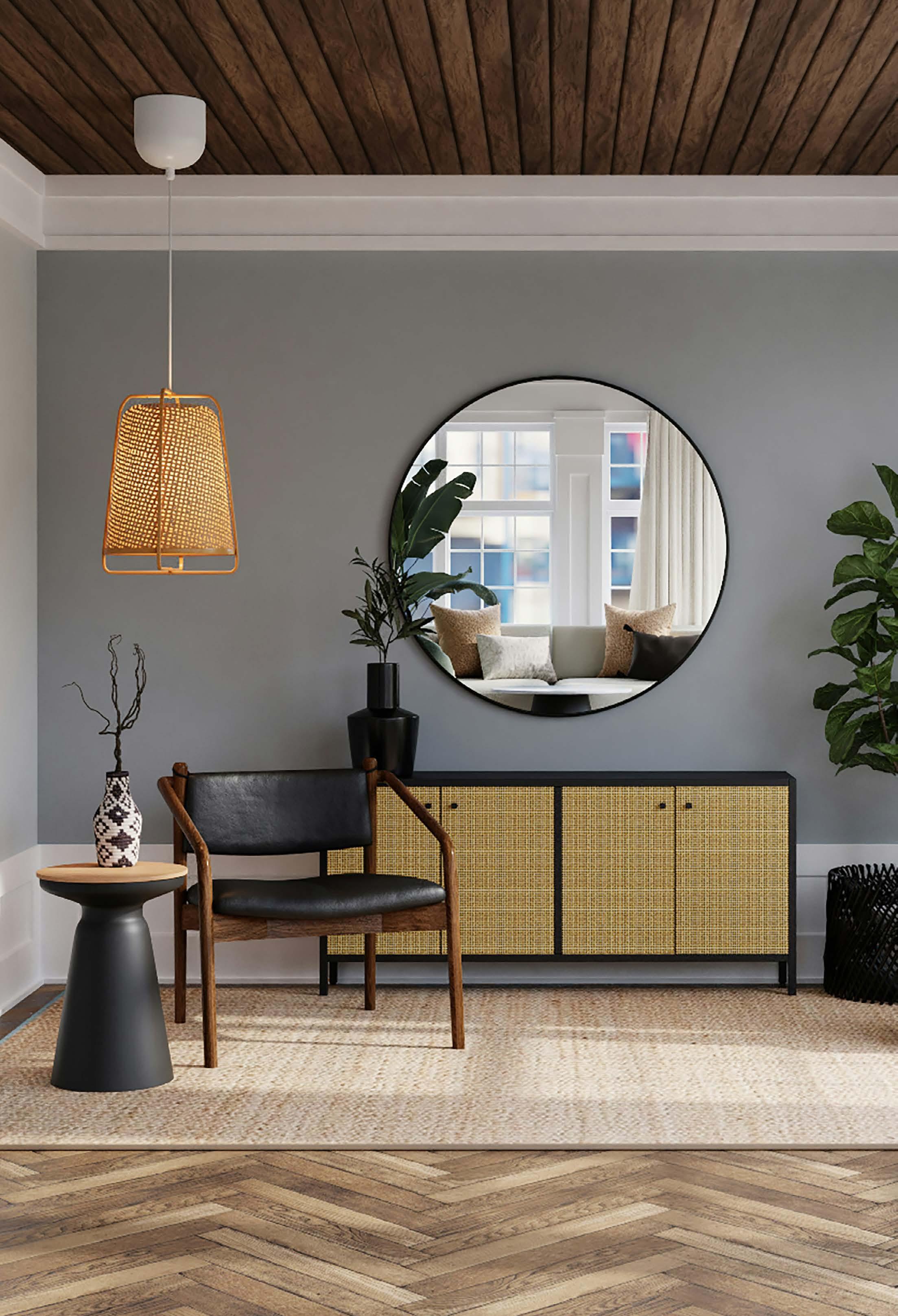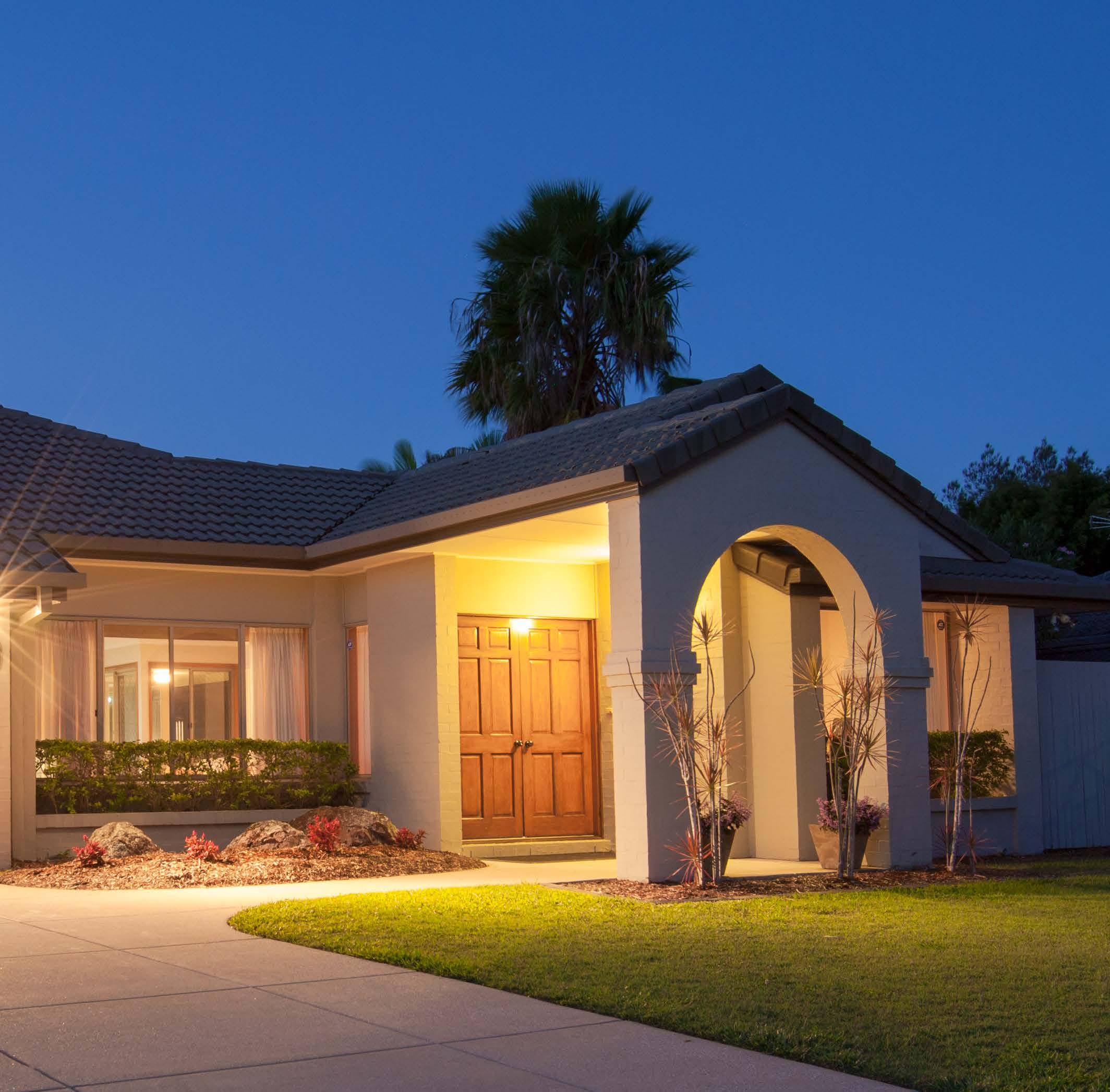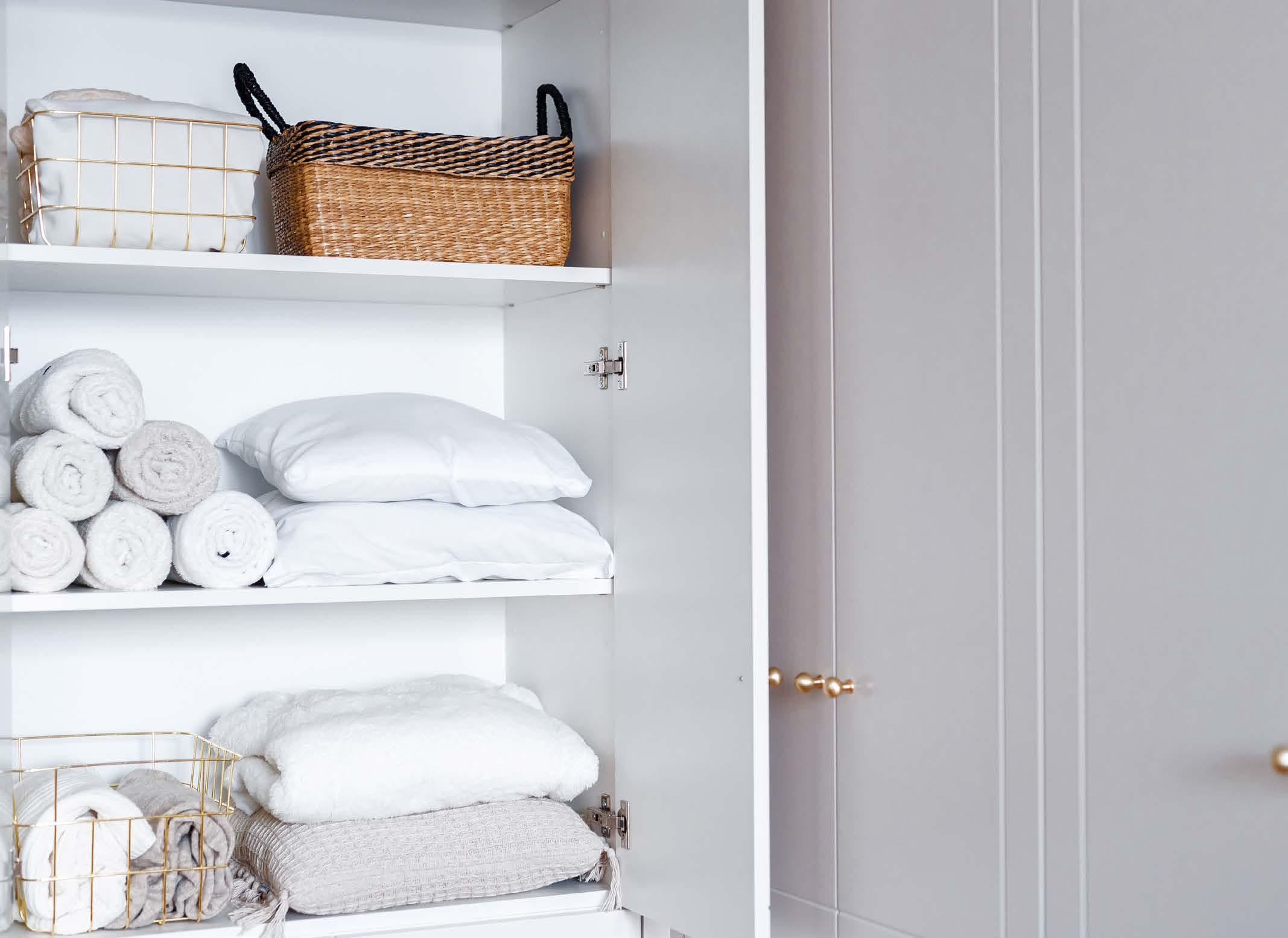

WELCOME TO THE June 2024
P u BLISH e R
Century 21 Australia Pty Ltd
CO n TRIB u TORS
Chris Gray CoreLogic BMT Tax Depreciation
e DITORIAL en Q u IRI e S
Century 21 Australia (02) 8295 0600
ADV e RTISI n G en Q u IRI e S
Century 21 Australia (02) 8295 0600
DISCLAIM e R
We have in preparing this information used our best endeavours to ensure that the information contained therein is true and accurate, but accept no responsibility and disclaim all liability in respect of any errors, inaccuracies or misstatements contained herein. Prospective buyers and sellers should make their own enquiries to verify the information contained herein. All information contained in the CENTURY 21 Australia Pty Ltd website is provided as a convenience to clients. All links to property prices displayed on the website are current at the time of issue, but may change at any time and are subject to availability.
For more information on our Privacy Policy please refer to: www.century21.com.au/privacy

Should strata
Your Empire CEO, Chris Gray
SHOWS SYD ne Y
e CAPITAL CITY
CoreLogic’s Home Value Index rose 0.8% in May, the 16th consecutive month of growth and the largest monthly gain since October last year.
The mid-sized capitals continued to lead the pace of growth, with Perth home values up 2.0% in May, Adelaide rising 1.8% and Brisbane up 1.4%. In dollar terms, it’s the equivalent of the median dwelling value rising by more than $12,000 month-to-month in each city.
The remaining capital cities recorded milder conditions, ranging from a 0.6% lift in Sydney values to a monthly decline of -0.5% in Hobart and a -0.3% fall in Darwin.
“The number of properties available for sale in Perth and Adelaide remain more than -40% below the five-year average for this time of the year while Brisbane listings are -34% below average,” Mr Lawless said.
“Inventory levels in these markets remain well below average despite vendor activity lifting relative to this time last year. Fresh listings are being absorbed rapidly by market demand, keeping stock levels low and upwards pressure on prices.”
Conversely, listings across Hobart are tracking 41% above the five-year average, a consequence of lower demand, with home sales -6.4% below the previous five-year average over the rolling quarter.
 BY CORELOGIC
BY CORELOGIC
a changing of the guard in May. Brisbane overtook Canberra as having the second-highest median dwelling value across the capitals in May, a position Brisbane hasn’t recorded since 1997.
CoreLogic research director, Tim Lawless, said extremely low levels of available supply across the strongest markets provide the best explanation for the difference in growth rates.
A changing of the guard:
Click here to read the full article H
With Brisbane housing values consistently posting solid capital gains while ACT values remain relatively stable, we saw
In January we also highlighted Brisbane dwelling values overtaking the Melbourne median. This was partly compositional, with the overall median dwelling value in Melbourne being weighed down by a high concentration of relatively cheap units. However, Brisbane house values are now also higher than the median house value across Melbourne, for the first time since June 2008. The median house value in Brisbane is currently $937,479, $190 above the Melbourne median. The median unit value in Brisbane, at $615,429, is also now higher than the median unit value in Melbourne, which is $614,299.

REI

Switch now at reisuper.com.au/join

S HO u LD STRATA
F ee S CHA n G e
YO u R B u YI n G
D e CISIO n ?
 BY CHRIS GRAY, CEO, YOUR EMPIRE
BY CHRIS GRAY, CEO, YOUR EMPIRE
Strata fees can vary enormously when you buy into an apartment building or townhouse complex and so it’s important to understand more before you buy. Are high strata fees a bad thing and cheap ones good – as always, often the contrarian view can be a better financial decision.
Strata fees cover the costs of maintaining and managing the common areas of your property, such as:
• Administration
• Management
• Gardens
• Pools
• Elevators
• Building maintenance
• Shared spaces
• And more They are essential to ensure that the property remains in good condition and retains its value (or in some cases, increases its value).
WHAT DO STRATA FEES INCLUDE?
• Cleaning and Gardening: Regular upkeep of common areas to maintain cleanliness and aesthetics.
• Repairs and Maintenance: Routine and emergency repairs to common property elements.
• Insurance: Covers the building, common property, and sometimes, public liability.
• Utilities: Water, electricity and gas for common areas
• Management Fees: Costs associated with the strata manager who oversees the property’s maintenance and administration
HOW ARE STRATA FEES DETERMINED?
Strata fees are set based on the annual budget agreed upon by the owners' corporation. This budget reflects the anticipated costs (including professional assessments) for maintaining and managing the property over the year. Fees can vary significantly depending on the size and amenities of the property.
ARE YOUR FEES TOO HIGH?
Determining whether your strata fees are too high can be tricky. Higher fees often indicate more comprehensive maintenance and better facilities (or smarter saving for future expenses), which can
enhance property value. However, it's essential to ensure that the fees align with the services provided and that there is transparency in how funds are used. Sometimes, you are just better off paying a slightly higher strata fee now so your building can "save for a rainy day", or so that the building is better maintained. There are many factors that can influence the strata fee:
• Property size and age: Larger and older properties might require more maintenance.
• Facilities: Pools, gyms, and elevators increase maintenance costs.
• Management quality: Efficient management can optimise costs.
It's important to compare your fees with similar properties in the area to gauge if they are reasonable. Here’s a more detailed breakdown: Lower end ($500 - $1,000.qtr): This might apply to newer
Continued over page

Continued from previous page
buildings with fewer amenities or buildings where the management has optimised costs effectively. Mid-range ($1,000 - $2,000/qtr): This is a common range for many well-managed buildings with a standard range of amenities. This is usually around the range that we purchase for clients (and that I own for myself) i.e. blue-chip property in a 40–60-year-old block of 12 units with no lifts, gyms or pools. Higher end ($2,000 - $5,000+/qtr): Applies to buildings with highend amenities, older buildings requiring significant maintenance, or very premium locations.
THE IMPORTANCE OF GETTING A STRATA REPORT
If you are ever buying an investment property, it's crucial to obtain a strata report before you make an offer (along with all your other essential reports and an independent valuation). The strata report provides detailed information about the financial health of the strata scheme, any upcoming maintenance or repairs, and past issues that have been addressed. A thorough strata report can reveal potential red flags and help you avoid costly surprises down the road.
WHERE IT GETS TRICKY
Just imagine you have 2 identical blocks that need to raise $10,000 per unit. Block A decides to double the normal strata fees of $1,000/qtr to $2,000/qtr and raise the funds over 2.5 years. Block B decides to raise a special levy of $10k in 3 months’ time.
Both blocks have an equal investment opportunity, but they have just chosen to raise the funds in a different way. Some buyers may have an extra $10k in their pocket and can fund it straight away, whereas another buyer that has more disposable income may prefer to fund it over a couple of years. A third buyer may not be able to afford either payment method and needs to avoid buying completely. Neither way is right or wrong.
You could read into the $10k levy as it being a nightmare block that constantly needs to raise funds to repair a very worn-out building.
Another interpretation is that they’re spending $10k each on the building to improve it and therefore may increase the value by more.
Or you could realise that they’re sorting out a $10k problem now that could be a $20k - $30k problem if left unfixed.
INTERPRETATION
In essence, you need time and experience with multiple buildings to really know what’s happening with a building and whether the past, current and future predictions of strata fees represent a good investment opportunity or a nightmare about to happen. Sometimes you can’t control what’s around the corner even if you do get a full strata report and have your solicitor or buyer’s agent go through it in detail. So, with every property you buy, you always need to have some funds up your sleeve for a rainy day.

ABOUT THE CONTRIBUTOR
Chris Gray is CEO of Your Empire, a buyers’ agency that buys homes and investments for time-poor professionals – searching, negotiating, renovating and managing property on their behalf. Chris has spent over 10 years as the host of ‘Your Property Empire’ on Sky News Business channel, where he’s interviewed various heads of property research companies and major industry figures. Chris is a qualified accountant, buyers’ agent and mortgage broker. For more information, visit www.yourempire.com.au and follow Chris on Facebook: @ChrisGraySydney

R e MAI n I n G ATO COMPLIA n T: R en TAL

Each tax season, the Australian Tax Office (ATO) directs its attention to specific areas where taxpayers tend to make mistakes, whether inadvertently or intentionally.
Rental properties are under scrutiny this financial year-end with the ATO announcing that audits reveal errors in 90% of rental property-related tax returns, resulting in a collection shortfall of nearly $1.3 billion.
Some areas where inflated claims were found include exaggerated deductions, particularly for loan interest payments, insufficient documentation to substantiate claimed expenses, holiday homes not genuinely available for rent, and misapplication of Division 43 capital works claims on investment properties.
EXAGGERATED DEDUCTIONS ON INTEREST EXPENSE CLAIMS
• The ATO will closely examine property owners who attempt to claim borrowing costs for both their primary residence and rental property. Such actions may lead to inflated deductions and possible penalties for failing to comply with tax regulations.
MISALLOCATION OF RENTAL INCOME AND EXPENSES
• Deductions related to jointly owned properties should align with each owner's share of ownership.
• Claiming larger deductions on one owner who may have a higher income, is fraudulent and will attract scrutiny.
• Incorrect allocation could result in tax liability discrepancies and draw attention during audits.
NON-GENUINE AVAILABILITY OF HOLIDAY HOMES FOR RENT
• Owners of rental properties should only seek deductions for periods when the property is genuinely available for rent.
• Trying to claim deductions during periods of personal use could invite scrutiny from the ATO and potential penalties.
• Verified evidence will be required for any periods during which
renovations and maintenance are performed on a rental property.
INACCURATE CLAIMS FOR NEWLY ACQUIRED RENTAL PROPERTIES
• Immediate claims for repair or renovation expenses on newly acquired properties are not allowed.
• Certain claims need to be claimed over a period of time, as specified by the ATO.
With this focus on inflated property depreciation claims, property investors must take proactive steps to ensure compliance. Below we have listed some ways to avoid scrutiny from the ATO on your investment property claims.
1. MAINTAIN ACCURATE RECORDS
Keep detailed records of all expenses related to your rental property from the day of purchase, including receipts, invoices, and bank statements.

This documentation will help substantiate your claims in case of an audit.
2. KEEP PERSONAL AND INVESTMENT EXPENSES SEPARATE Avoid mixing personal expenses with investment property expenses. Maintain separate bank accounts and credit cards for your rental property to track income and expenses accurately.
3. ENSURE ACCURACY IN YOUR EXPENSE CLAIMS
Claim expenses only for periods directly linked to earning taxable income, ensuring that you divide claims considering:
• Non-rental use.
• Partial rental of the property
• Personal use.
• Below market rental rates
• Report income and expenses proportionate to your investment share.
4. SEEK PROFESSIONAL ADVICE:
Consult with a qualified tax adviser or accountant who specialises in property tax matters. They can provide guidance on legitimate deductions, compliance with tax `laws, and strategies to optimise your tax position.
Property investors can track income and expenses through the MyBMT
online portal at www.mybmt.bmtqs. com.au. This tracker from BMT Tax Depreciation simplifies expenditure with specific categories such as body corporate fees, cleaning costs, and insurance, aligned with the Australian Taxation Office and MyGov for consistency and ease of use. It calculates net rent, incorporates depreciation values, and shows total outlay, helping investors stay informed of their financial position. Weekly, fortnightly, or monthly email updates can be set up to monitor expenses. Once recorded, investors can download an annual report and share it with their accountant when completing tax returns.

H OW TO D e SIG n A M u LTIP u RPOS e ROOM

Over the last several years both homeowners and renters have created multipurpose rooms to meet the influx of new activities and work-from-home challenges. Whilst this initial shift was born out of necessity during COVID, the idea of creating flexible spaces has been growing in popularity as people seek spaces that more effectively suit their hectic daily lives. If you want to learn how to better utilise your home, read on for our tips for creating the ideal multipurpose room.
TRANSFORM AN UNDERUSED CUPBOARD OR WARDROBE
Depending on its size, an unused wardrobe is brimming with possibilities as part of a new multipurpose space. For example you could easily transform one in your bedroom or guest room into a home office or extra storage space for supplies. If it's shallow and long, consider dividing the space with a closed system for storage on one side and your workspace on the other. It’s best to add a comfortable work chair, some additional lighting and hanging artwork to make the space as inviting as possible. If you need additional storage some wall mounted shelves are suggested
Is there an extra cupboard near your entertaining space?
Consider removing the doors so that it is open and create a customised bar. This can be done by simply removing the shelves and
adding a chest, cabinet or bar cart to store your bottles and glassware. Bring in some mood lighting with a floor lamp or pendant light and you’re ready to host your next dinner party or cocktail soireé!
CARVE OUT A MULTIFUNCTIONAL KITCHEN
Has your kitchen become the centre of activity in your home? With some quick rearranging and the right piece of furniture, you can create a space in your kitchen that can easily change as your needs do. You can add a small desk or additional counter space to make the corner of the room into the perfect multipurpose area. Position it in the corner (preferably near a window) and add a stool that can be hidden away when not used. This can be the desk where you take video calls in the morning and make dinner in the evening!
DESIGN A MULTIPURPOSE GUEST ROOM AND WORKOUT AREA
Do you have a home office or guest bedroom that rarely hosts visitors? It may be time to invest in a sofa bed. If you don’t have people staying over the bed can be tucked away opening up the floor space for a workout area. This is also a terrific idea for studio apartments where you need to create a living, dining and sleeping space in a small area. You can put the bed away during the day and wheel over footstools and a fold away table when it’s time to entertain.
MAKE YOUR DINING ROOM DO DOUBLE DUTY
Formal dining rooms took on new life during the pandemic, and they will likely stay the spot of more than just family dinners. You may be tired of moving paperwork and computers whenever you want to Continued over page

Continued from previous page
use the space for dining. If you can spend the time and money, custom cabinets may be the answer. They can house a hidden workspace with a fold-down desk or a crafts studio with a retractable work table and plenty of shelves for supply bins. Games and puzzles also can be stored here. And if dinner parties are in your future, save one of the cabinets for specialty serving platters, dinnerware and table linens you don’t use daily.
If you don’t have the time or space to install something permanent, consider finding something convertible that opens to reveal a workspace with charging stations, lighting and storage for your essential files. When the work day is over, close the doors and move your chair out of the way, and
the dining room can be restored for a relaxing family dinner with minimal hassle.
CREATE A HIDDEN LAUNDRY ROOM
Are you hoping to invest in a new laundry set up in your home? If your bathroom has an empty cupboard or underused vanity it might be time to convert it into a multipurpose bathroom and laundry. Since bathrooms already have water running this room and the kitchen are the most accessible places to add stackable or side by side washers and dryers. If the room is big enough to accommodate both you can install bi-fold doors to create a separate ‘room’ for the appliances when they aren’t in use.
TRANSFORM A LARGE LAUNDRY AREA
If your home is blessed with a larger laundry area than
you need, this may become the perfect multipurpose space. We recommend assessing the site to determine if shelving, cabinetry or an island can be added. This can turn into a place for gift wrapping, odds and ends storage as well as laundry.
If you decide to add a table or island this can be perfect for not just gift wrapping but family craft projects, studying or working from home when you aren’t folding laundry.
From repurposing formal dining areas into workspaces to transforming bathrooms into hidden gems, the possibilities are endless. With a little imagination and some practical tips, anyone can create the perfect multipurpose room to fit their needs and make the most out of their home.









YourPorter specialises in connecting household utilities ensuring your moving experience is made easy. Freedom – stay in total control, making choices to suit your needs be it cost, product features or supplier preference Our service comes at no cost and no obligation to you Simple – use our easy, online signup process or speak to one of our friendly consultants on the phone.
Once
